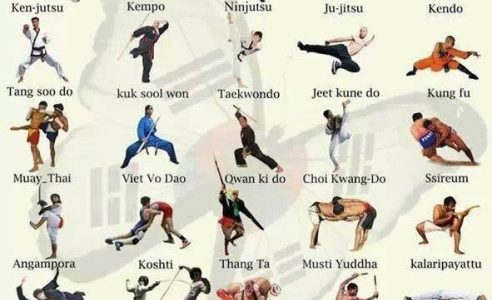Come Discover The Exciting Globe Of Martial Arts, Where Ancient Practices Fulfill Modern-Day Effectiveness - A Journey Into History And Philosophy Waits For.
Come Discover The Exciting Globe Of Martial Arts, Where Ancient Practices Fulfill Modern-Day Effectiveness - A Journey Into History And Philosophy Waits For.
Blog Article
martial arts store near me Composed By-Rafferty Henson
Enter the ancient world where martial arts were substantiated of necessity in varied regions. Cultures crafted unique combating styles linked with historical contexts. Techniques developed over centuries with devoted practice and cultural exchanges. Today, contemporary martial arts mix standard components for maximum efficiency. Philosophically, martial arts stress self-control, self-improvement, and consistency. Regard, humility, and balance are fundamental concepts directing experts in the direction of development and durability. Explore the depths of this abundant history and approach to reveal the profound impacts forming this long-lasting technique.
Beginnings of Martial Arts
Fighting style came from different areas around the world, advancing as functional combat systems to defend against risks. These old fighting designs were developed out of need, with each society crafting strategies fit to their one-of-a-kind environments and challenges. From shaolin kung fu grappling arts of Jujutsu in Japan to the striking techniques of Kung Fu in China, martial arts were deeply linked with the historic, social, and social material of their particular societies.
In Japan, the samurai class refined martial arts like Kenjutsu, the art of the sword, which later on evolved right into the extra promoted form of Kendo. On the other hand, in Brazil, Capoeira emerged as a mix of dance and combat, developed by enslaved Africans as a method to stand up to oppression. Each martial art carries with it an abundant background and viewpoint, showing the worths and ideas of individuals who practiced them.
As you delve into the origins of martial arts, you reveal a tapestry of human ingenuity, strength, and the unyielding spirit of warriors throughout time.
Advancement of Techniques
With centuries of technique and refinement, fight techniques within various martial arts have gone through a profound development. From old designs like Kung Fu and Karate to much more modern disciplines such as Brazilian Jiu-Jitsu and Krav Maga, the advancement of methods has been driven by a mix of social influences, functional applications, and technical innovations.
One significant aspect of this evolution is the cross-pollination of strategies in between different martial arts. As an example, methods from conventional Japanese Jiu-Jitsu were incorporated right into the development of Judo by Jigoro Kano in the late 19th century. This mixing of designs has resulted in the growth of crossbreed martial arts like Mixed Martial Arts (MMA), which combine components of striking, grappling, and entry strategies.
Moreover, the evolution of techniques has been formed by the increasing emphasis on efficiency and performance in fight. Professionals have actually continually sought to refine their strategies with rigorous training, testing, and competitors, resulting in the growth of very specialized and effective combating designs. Overall, the advancement of techniques in martial arts mirrors the dynamic nature of fight and the continuous pursuit for enhancement and development.
Thoughtful Foundations
Exploring the underlying thoughtful principles of martial arts offers understanding right into their core values and leading ideas. At the heart of lots of martial arts self-controls is the idea of discipline itself. By educating your body and mind to act as one natural device, you grow self-control that prolongs past the dojo or gym right into day-to-day life. This discipline encompasses regard, humility, and self-discipline, shaping not just your physical capacities but also your personality.
One more essential philosophical structure in martial arts is the idea of constant self-improvement. The trip of mastering a fighting style is perpetual, with experts frequently striving to better themselves, both physically and psychologically. This focus on growth fosters durability, determination, and a development state of mind that can be put on all elements of life.
In addition, martial arts emphasize the relevance of harmony and balance. Strategies are created to use an opponent's power against them, highlighting the concept of yielding and redirecting force rather than satisfying it head-on. This philosophy reaches interpersonal relationships, advertising calm resolutions and good understanding. By embracing these philosophical structures, martial artists not just enhance their combat abilities yet additionally grow a way of living fixated personal growth, respect, and harmony.
Conclusion
Finally, the history and philosophy of martial arts offer an abundant tapestry of custom, self-control, and self-improvement.
Consider martial arts training in hindi of Bruce Lee, who transformed martial arts by blending different designs and viewpoints to develop his very own one-of-a-kind form of Jeet Kune Do.
Through devotion and innovation, martial musicians remain to press limits and influence others to reach their complete potential both in battle and in life.
